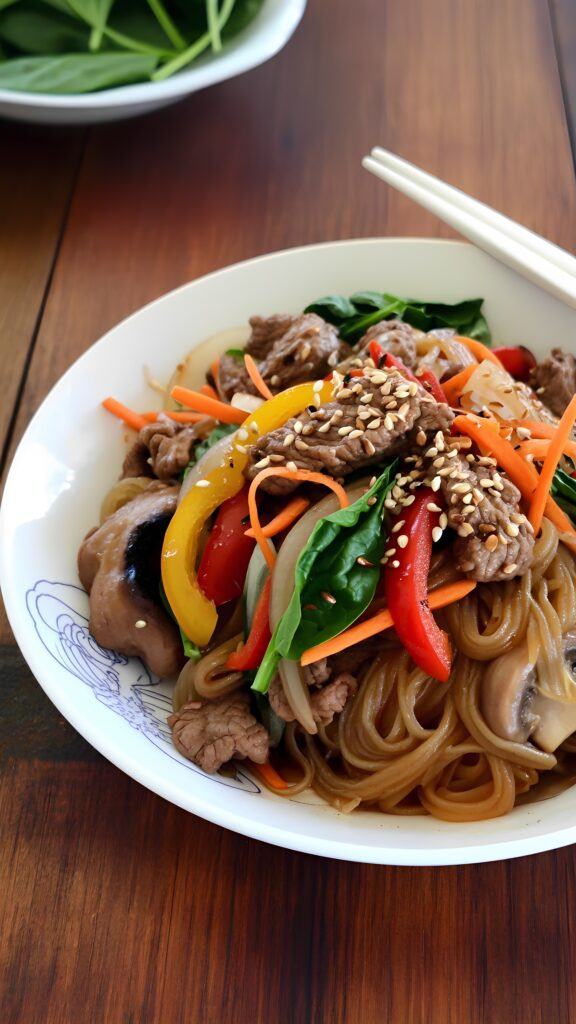
Japchae is a delightful Korean noodle dish that blends vibrant vegetables with savory beef and glass noodles, all tossed in a subtly sweet and umami-rich soy sauce. It's a dish that dances on the palate, offering a beautiful balance of flavors and textures.
Japchae has its roots in Korean royal cuisine, traditionally served during special occasions and celebrations. Originally, it was made without noodles, but over time, the introduction of sweet potato starch noodles, known as dangmyeon, became a beloved addition. This dish is often associated with festive gatherings, symbolizing prosperity and good fortune. It's a staple of Korean cuisine that embodies the essence of harmony, bringing together different ingredients to create a symphony of flavors.
What makes Japchae truly special are its unique ingredients and the way they meld together. The star of the dish, dangmyeon, provides a chewy texture that contrasts beautifully with the crunch of fresh vegetables like carrots, spinach, and bell peppers. Thinly sliced beef adds a rich, savory note, while the soy sauce-based dressing, laced with garlic and sesame oil, imparts a depth of umami that is simply irresistible. Each bite is a delightful dance of flavors, from the sweetness of onions to the nuttiness of sesame seeds sprinkled on top. Cooking Japchae involves a medley of techniques, from stir-frying to blanching, ensuring that each element retains its distinct character while contributing to a harmonious whole.
Japchae offers a symphony of flavors with chewy sweet potato noodles, colorful veggies, and an irresistible soy-sesame dressing. Simple to make, yet utterly satisfying.
Japchae is more than a medley of vibrant vegetables and silky glass noodles—it's a symphony of flavors that dance on your palate. The subtle sweetness of the soy sauce paired with the nutty aroma of sesame oil creates a harmony that’s both comforting and exhilarating. Each bite offers a delightful texture, from the slight chewiness of the noodles to the crispness of the vegetables, making it a truly gratifying experience.
Serve Japchae as a main dish or a delightful side to a larger Korean feast. Pair it with some kimchi for a contrasting spicy kick, or serve it alongside grilled meats for a more substantial meal.
If you find yourself with leftovers (a rarity, trust me), they can be stored in an airtight container in the refrigerator for up to three days. Simply reheat gently on the stove or in the microwave, adding a splash of water to revive the noodles' soft texture.
I encourage you to dive into this recipe and make it your own. Whether you add a sprinkle of chili flakes for heat or toss in some tofu for a vegetarian twist, the possibilities are endless. Share your Japchae adventures and any questions in the comments—I’m eager to hear about your culinary journey. Welcome to the delightful world of Korean flavors!